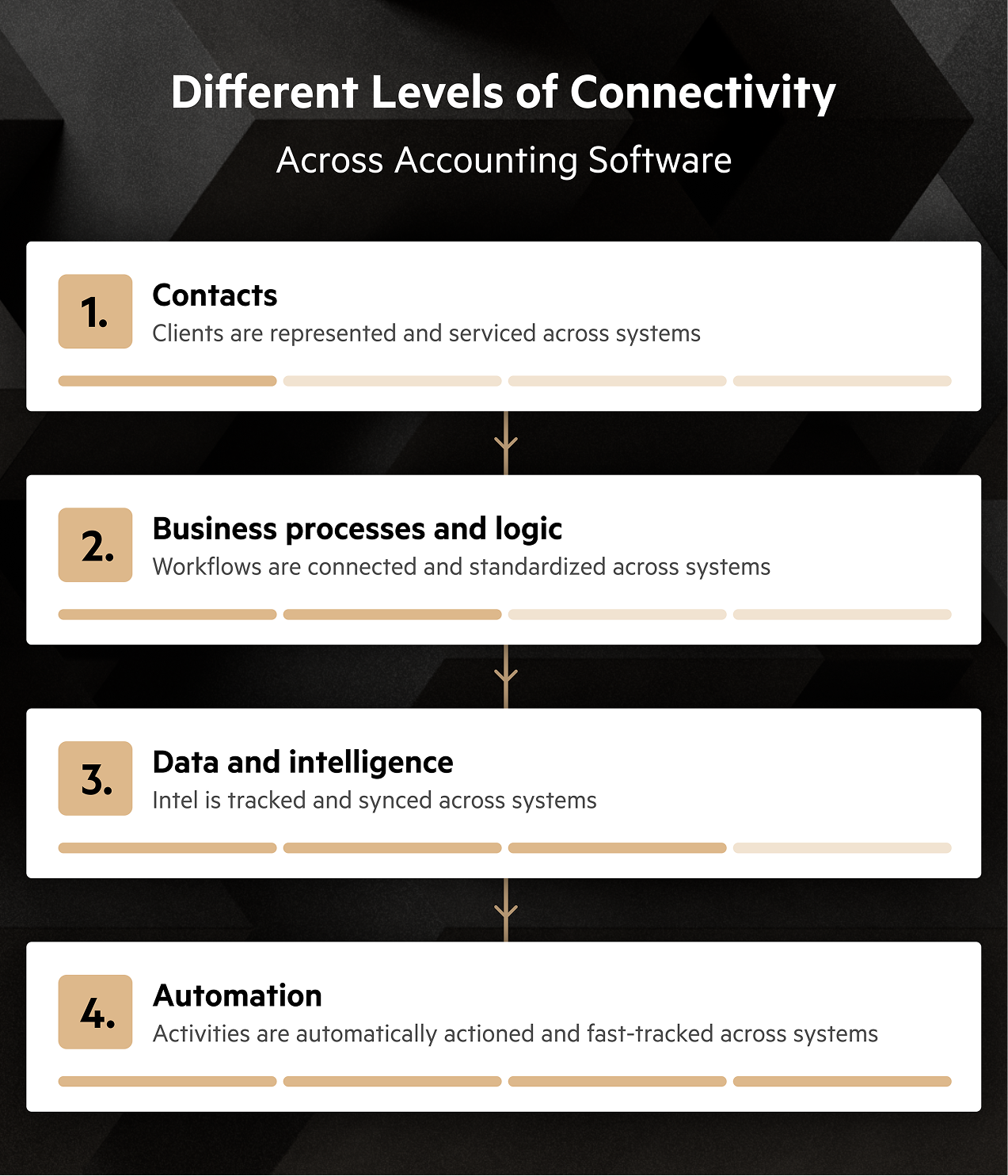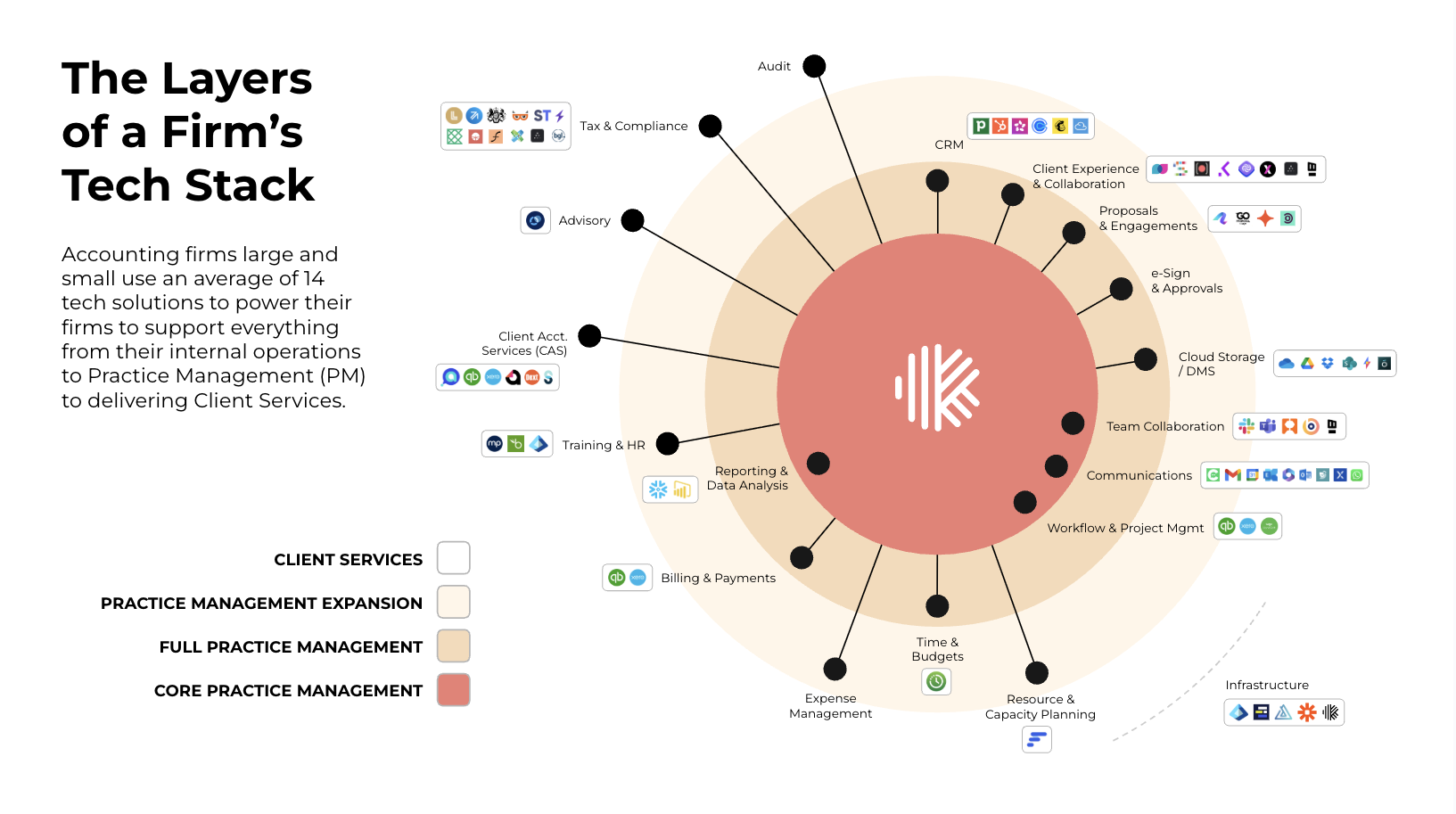Behind the scenes of Karbon’s connected technology ecosystem
Connectivity turns scattered workflows into a coordinated effort. Karbon is 100% focused on bringing your tools, team, and client work into one system, so that you can effectively grow your firm.

When we founded Karbon, we did so on the principle of a connected ecosystem and open architecture. We started by laying out a robust API, and have continued to evolve, curate, and expand it.
As practice management software, Karbon has the ability to interact with all the different categories of tools that are required to run an accounting firm. But it doesn’t do everything. As the center of a firm’s tech stack, it helps with the how—coordinating and orchestrating how work gets done.
Over the last year, Karbon’s connected ecosystem has grown from 35 to over 70 integrations. We’ve been able to create a curated ecosystem, where the best-of-breed tools are paired with the best in practice management. Here’s how.
What is a connected ecosystem?
According to our research, on average, firms use about 14 different pieces of technology, ranging from 9 in smaller firms to as many as 20 in larger ones.
A connected ecosystem is one where your technology works together to help your firm be productive. It means your workflows can move between systems, from start to finish, without barriers or gaps in the process.
Our aim is to help firms accomplish their goals by allowing work to be completed successfully and cleanly across multiple tools, so that there’s no data loss, double entry, or manual processes.
Levels of connectivity across integrations
Not all integrations are made equal. There are different levels of connectivity:
Contacts level, where clients are represented and serviced across systems. For example, a new lead in HubSpot automatically creates a new client record in Karbon.
Business processes and logic level, where workflows are connected and standardized across systems. For example, a proposal in Ignition auto-creates a work item in Karbon, or a payment is synced from Xero.
Data and intelligence level, where intel, such as period close data in Aider, is tracked and synced across systems.
Automation level, where activities are automatically actioned and fast-tracked across systems. Karbon’s workflow automation with StanfordTax is a great example of this.

The different levels of connectivity across accounting software
Benefits of a connected ecosystem
Technology is easier to scale than people. When your processes, tools, and data are successfully integrated, your business doesn’t grind to a halt when someone moves on or you struggle to fill a role. That makes your firm more resilient and ultimately more productive.
There is so much productivity loss when systems are not able to operate together. People lose time switching between tools, manually entering or transporting data, and replicating work.
The advantage of a connected ecosystem is that it leads to greater productivity, which then leads to greater profitability. Karbon customers save an average of 18.5 hours per employee a week. Our integrations are an important part of that.
How Karbon is building the most connected ecosystem
Many accounting firms start with a large number of tools in their tech stack. As they move towards a connected ecosystem, that stack consolidates.
A best-in-breed ecosystem understands what the core activities of your firm are, and which applications are best suited to handle them. It then enables these applications to intercommunicate—not only at the contact level, but also at the data, business processing, and automation level.

The layers of a firm’s tech stack
Over the last eight months, Karbon’s State of Accounting Tech survey has been collecting insights on how firms are engaging with accounting software. This research will help us to deliver better and smarter integrated solutions for the profession. We look forward to sharing the findings very soon.
The evaluation process
At Karbon, our goal is to make sure accounting firms can get work done as efficiently as possible. Our integrations have more than doubled in the past year, and we’ve always been intentional about what tools we decide to partner with.
We look to partner with professional-grade tools that can complement the standard functionality of Karbon, helping us power firms of all sizes. A connected ecosystem also gives the optionality of choice.
To assess whether a potential partnership is the right fit, we consider:
Are they providing value to their customers?
Do our customers request that type of functionality? Are they seeking it out?
What’s the quality of the tool? Does it have the ability to deliver a good customer experience, not just as a product, but in terms of success, support, and sales?
Does the potential partner have a similar culture and aptitude to Karbon?
Do they meet the standards for driving efficiency and productivity for their customers?
When Karbon customers engage with an integration, it should always be clear what problem is being solved—and it should always be solved in the way our customers expect.
The integration process
Connectivity between systems can take many forms. It can be embedded, white-labelled, or a fully integrated workflow.
At Karbon, our integrations start with customer demand. We listen to feedback and evaluate the tools our customers use that aren’t yet merged with Karbon.
From there, our focus is on quality control, which typically involves:
Discovery calls to learn more about the company and their product.
Qualitative research to understand the problems our customers are trying to solve.
An official partnership with the right provider.
Development and testing to build the integration, ensuring it meets our standards.
Beta phases to fine-tune and deliver the best possible experience for our customers.
General release, where the integration becomes a connected app that’s available to all customers.
This deliberate process ensures every addition to our ecosystem adds real value, works reliably, and fits seamlessly within the whole Karbon experience.
Better together
The Karbon ecosystem has grown aggressively across every category of accounting software, because that’s what our customers have asked for. They want interconnectedness, so they can reach higher levels of productivity and profitability.
Browse our growing list of ecosystem integrations to learn more about how these connections can transform the way your firm works.
